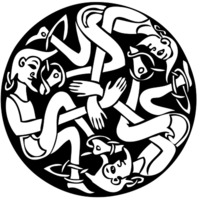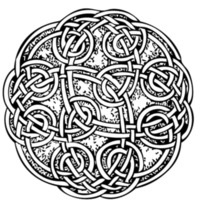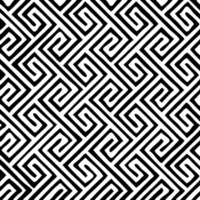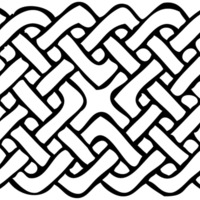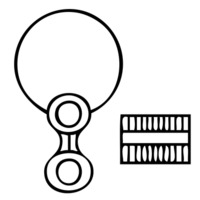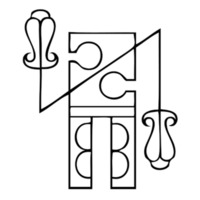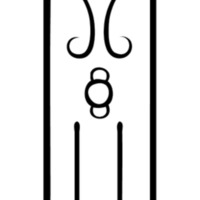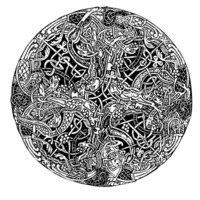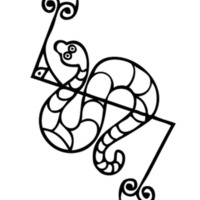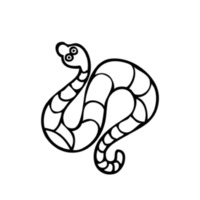Browse Items (26 total)
- Tags: Pictish Symbols
Sort by:
Human Figures
The representations of human figures by Celtic Artists were influenced by the Pagan Laws that forbade the copying of the works of the Almighty Creator. In Celtic Zoomorphic ornaments the physical appearance of man was not copied. His legs, arms,…
Tags: George Bain, Groam House, Pictish Symbols
Interlace
According to artist George Bain, Religion and Pagan laws had the greatest influence on the art form of Celtic knots, playing an important role in there design.
The interlacing of human form and Celtic knots evolved from laws forbidding drawing…
The interlacing of human form and Celtic knots evolved from laws forbidding drawing…
Tags: George Bain, Groam House, Pictish Symbols
Key Pattern
Key Patterns (repeated vertical and horizontal lines).
Know here as the Key Pattern, or a meander or meandros (Greek: Μαίανδρος) it is a decorative border constructed from a continuous line, shaped into a repeated motif. Such a design is also…
Know here as the Key Pattern, or a meander or meandros (Greek: Μαίανδρος) it is a decorative border constructed from a continuous line, shaped into a repeated motif. Such a design is also…
Tags: Pictish Symbols
Knot-work
Tags: Pictish Symbols
Mirror and Comb
Another object commonly inscribed on Pictish stones is the mirror, often paired with a comb.
The comb and mirror are thought to be symbols of female wealth and prestige, and may denote a woman’s memorial, although they are also heavily associated…
The comb and mirror are thought to be symbols of female wealth and prestige, and may denote a woman’s memorial, although they are also heavily associated…
Tags: Groam House, Pictish Symbols
Motif and Z-rod
This symbol is known as the rectangular Motif and Z-Rod, again, this Pictish symbol is of unknown meaning.
Also sometimes a square shaped motif with Z-rod symbol is represented.
It is thought that the rectangle in the centre of the lower…
Also sometimes a square shaped motif with Z-rod symbol is represented.
It is thought that the rectangle in the centre of the lower…
Tags: Groam House, Pictish Symbols
Motif with Triple Disc
The triple disc is a Pictish symbol of unknown meaning, that is found on Class I and Class II Pictish stones.
The symbol is found in various combinations with other symbols, notably with the crescent and v-rod. The symbol is constructed from a…
The symbol is found in various combinations with other symbols, notably with the crescent and v-rod. The symbol is constructed from a…
Tags: Groam House, Pictish Symbols
Plant Forms
The reference to the plant forms which rarely occur in the Book of Kells and not at all in the Book of Durrow and Lindisfarne, have been used to prove that the two latter books belong to an earlier period. It is the author’s opinion (George Bain),…
Tags: George Bain, Groam House, Pictish Symbols
Serpent & Z-rod
The serpent or snake, is thought to be a symbol of medicine/healing, although this is unknown.
The Z-rod, like the V-rod, may represent a broken arrow or spear, but again this is a Pictish symbol of unknown meaning.
The Z-rod, like the V-rod, may represent a broken arrow or spear, but again this is a Pictish symbol of unknown meaning.
Tags: Groam House, Pictish Symbols
Snake
The serpent or snake, is thought to be a symbol of medicine and healing, although this is unknown.
The snake symbol can also be found with a Z-rod through it.
The snake symbol can also be found with a Z-rod through it.
Tags: Pictish Symbols
